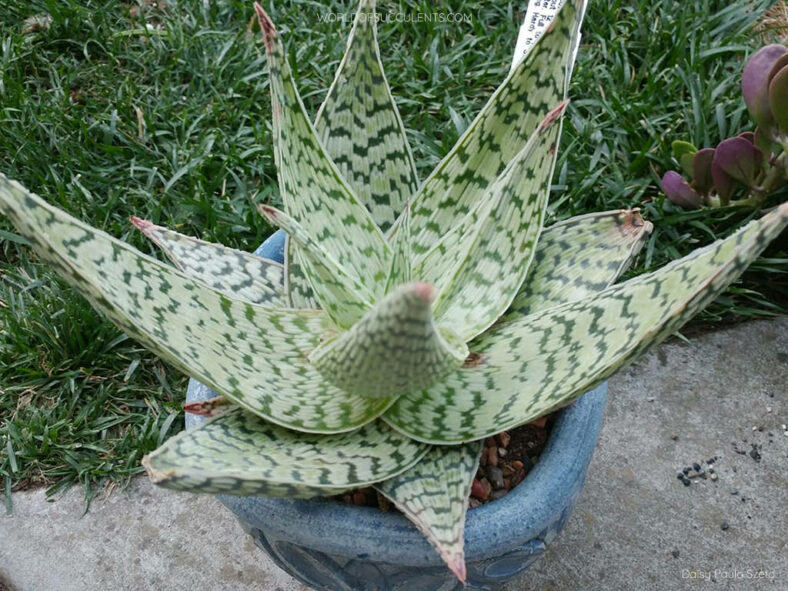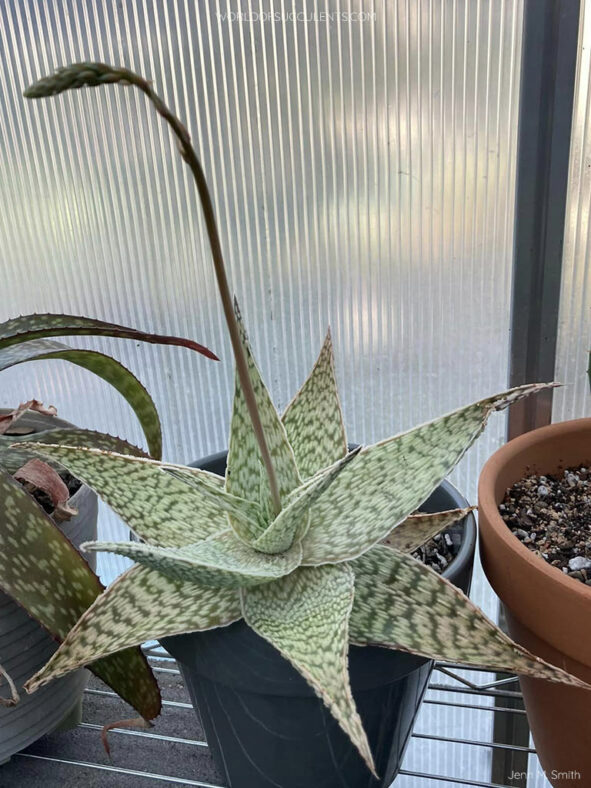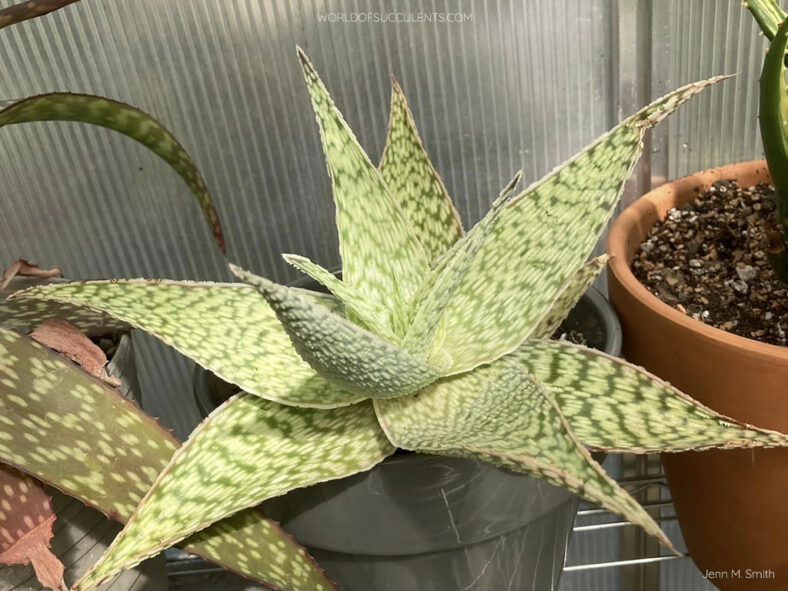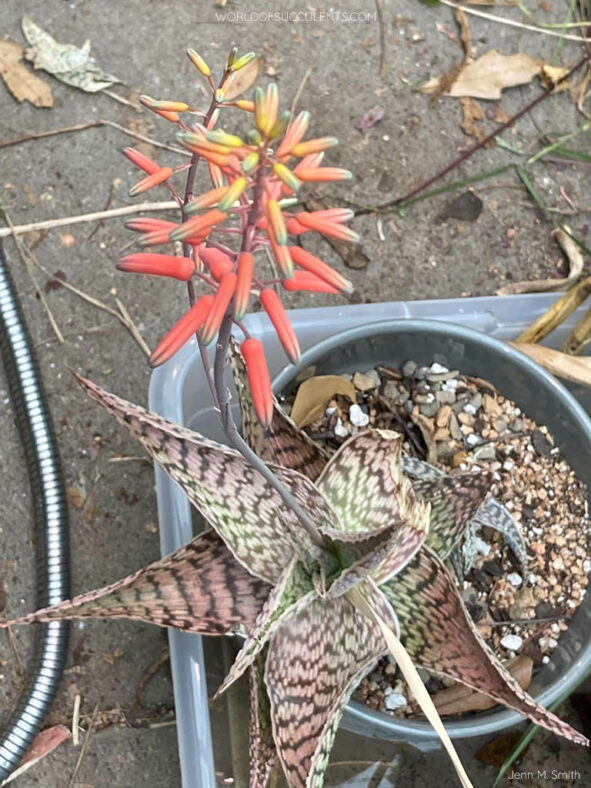Aloe 'Delta Lights' is a brightly variegated plant that displays a mix of green and white. It can be grown in containers or rock gardens.
Scientific Name
Aloe 'Delta Lights'
Scientific Classification
Family: Asphodelaceae
Subfamily: Asphodeloideae
Genus: Aloe
Origin
Aloe 'Delta Lights' is a hybrid created by Kelly Griffin while he was the Curator of Xerophytes at Rancho Soledad Nurseries in Rancho Santa Fe, California, United States. The hybrid's name refers to one of its parents, Aloe deltoideodonta.
Description
Aloe 'Delta Lights' is a beautiful succulent that forms rosettes of dark green leaves heavily marked with creamy-yellow to white striations, creating a striking zigzag pattern. The rosettes readily produce offsets and can grow over 12 inches (30 cm) in diameter. The leaves are broad and taper gracefully to a point, measuring up to 1.2 inches (3 cm) wide at the base. When exposed to intense sunlight, the leaves may take on a spicy pinkish hue.
During the winter, Aloe 'Delta Lights' produces dark reddish-orange, tubular flowers on tall, upright stalks that can be branched or simple.
In Europe, some nurseries erroneously label Aloe 'Delta Lights' as Aloe rauhii 'Demi'.

How to Grow and Care for Aloe 'Delta Lights'
Light: When growing Aloe 'Delta Lights' indoors, place it in a window with plenty of bright indirect light. Rotate the pot once or twice a week to ensure all sides of the plant receive equal lighting. Outdoors, the plant prefers light shade, especially during the hottest parts of the day.
Soil: Great drainage is essential for growing this plant because too much moisture for an extended period can cause root rot. Use commercial soil for succulents, or make your own well-draining mix.
Temperature: When temperatures drop below 50 °F (10 °C), this plant must be brought inside. Aloe 'Delta Lights' can tolerate heat reasonably well but will not survive a hard frost. It grows best in USDA Plant Hardiness Zones 10a to 11b, with average minimum winter temperatures ranging from 30 to 50 °F (-1.1 to 10 °C).
Watering: This plant needs regular watering but can tolerate drought conditions for short periods. Water deeply, but only when the soil is completely dry to the touch. Do not let water stand in the rosettes. Reduce watering during the winter months.
Fertilizing: Although it generally does not require fertilizer, this plant will benefit from extra nutrients. Use a water-soluble fertilizer diluted to half the recommended strength.
Repotting: Repot only as needed during spring. Pick a container that is one size larger and has drainage holes.
Propagation: To propagate Aloe 'Delta Lights', remove the offsets from a mature plant from late spring to early summer.
Learn more at How to Grow and Care for Aloe.
Toxicity of Aloe 'Delta Lights'
Aloe 'Delta Lights' is not listed as toxic for people and pets.
Links
- Back to genus Aloe
- Succupedia: Browse succulents by Scientific Name, Common Name, Genus, Family, USDA Hardiness Zone, Origin, or cacti by Genus
Photo Gallery
Click on a photo to see a larger version.


